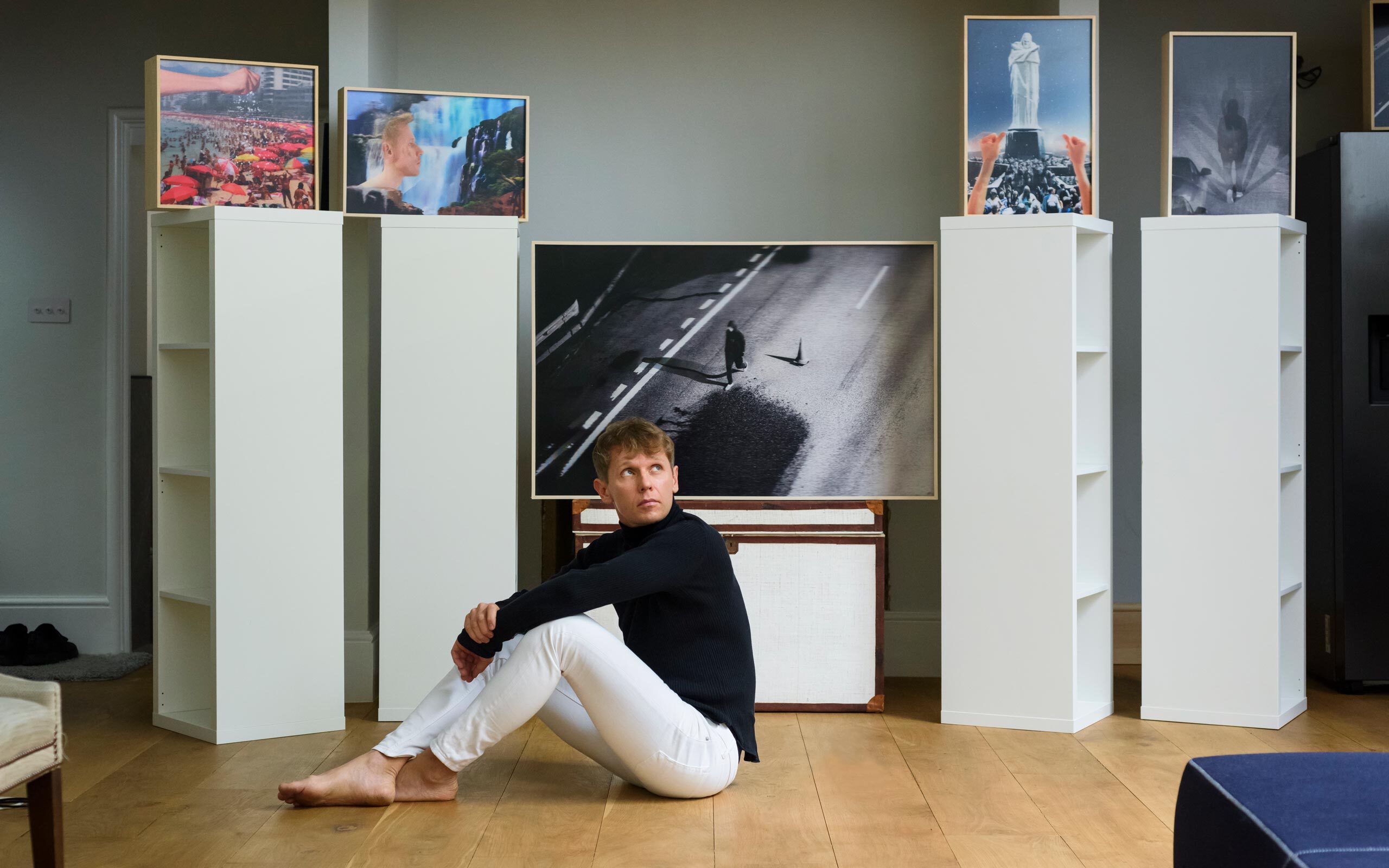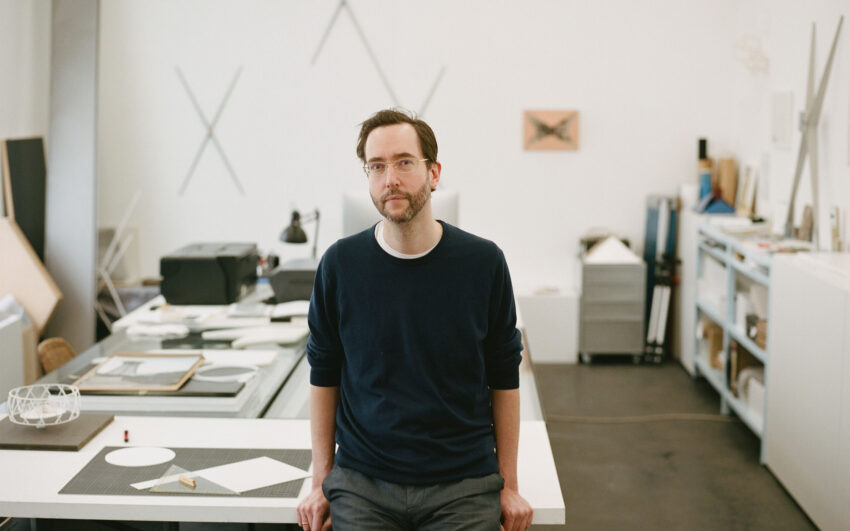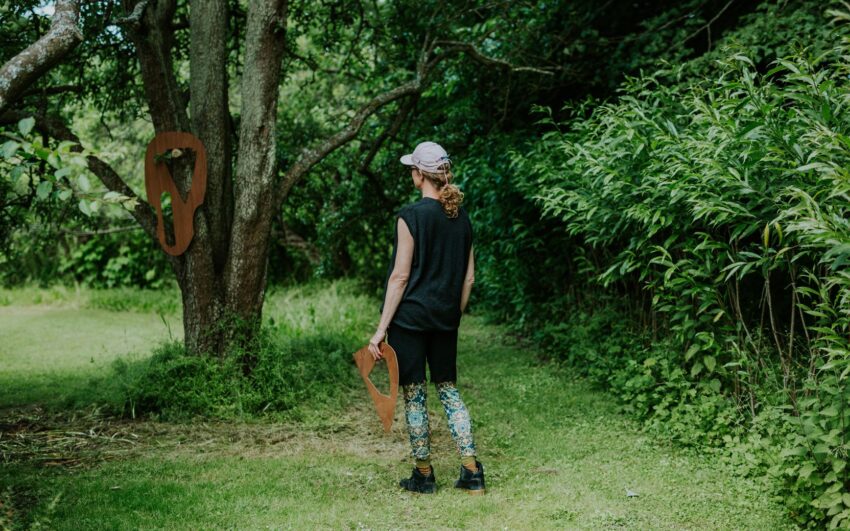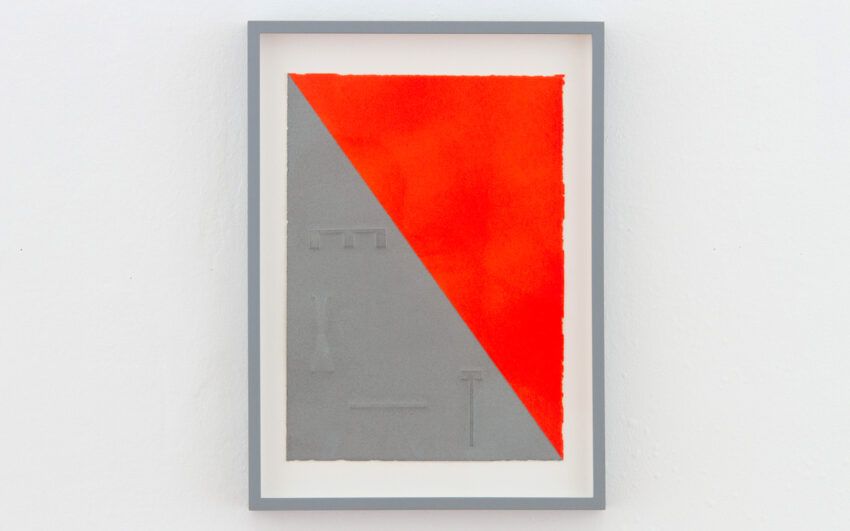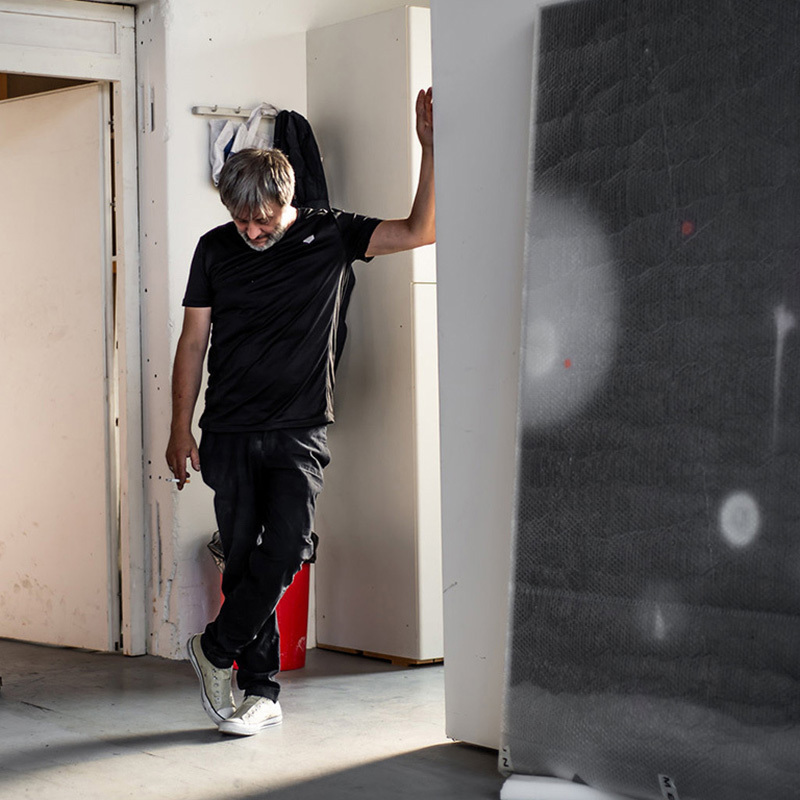The instrument of Russian performance artist Fyodor Pavlov-Andreevich is famously his body. Often naked, and combined with audience interaction, he manages to shock his viewers. But under the skin he has a message about the light and darkness of human nature.
Fyodor, you’ve been a host on Russian television, then the editor of a very popular teen magazine. How did your body become an object of your art?
I always thought there was something wrong with me. I started working as a kids’ TV presenter when I was 13. I understood that I wanted to be seen and I had something to say. Then in 2003, I saw Marina Abramović sitting on a white horse at The History Museum in Moscow. it amazed me. I stood, looking at her performance, and I was like: “Oops, it’s me! My place is there.” That put a new spin on everything. Almost immediately I lost my TV job — by that moment I was hosting a very popular Sunday night spot on one of the main channels in Russia, so my career had already reached its peak by then. I created my first performance in 2008, without knowing what I was doing or how I was doing it, but knowing that it would be the only way for me to survive. I believe I just switched one box for another: the TV box where I spent 15 long years and the claustrophobic glass box in which I lock myself when performing my Foundling. That’s when I entered a new phase of my life, when I was almost 32. Swiss curator Hans Ulrich Obrist saw my work at Paradise Row in London and invited me to work on an installation/performance which he and Maria Balshaw [now director of The Tate] had curated. In my first two years, I developed a bunch of works with curators (Klaus Biesenbach and RoseLee Goldberg, to name a few), whom I still consider crucial to my practice. I started realizing that the work I’d been developing wasn’t just me angling for a new job. I felt that performance art was the reason I was sent into this world. It’s like how some people are assigned to a gender at birth that doesn’t correspond to who they truly are. Others do the wrong jobs. Or are born in the wrong place. My situation was double trouble: I wasn’t actually a TV presenter, but a performance artist, nor was I was truly Russian — instead, I was Brazilian. With time, I tried to fix both of these errors.
Did you know from the beginning what your performances would be about?
I’ve never planned anything rationally. In the way I work, everything goes subconsciously and spontaneously. I don’t really invent, but just follow what I hear, as though it were dictated. It is important to listen to the signals when a window in the sky opens up. These periods of discovery can be short and erratic; one has to stay alert so as not to miss them. You have to somehow deserve it, and the mechanism cannot be put into words. It has nothing to do with karma or any kind of preparation. It’s completely irrational and indescribable. I never really need to think about a new idea; instead, I’d rather take a shower. Lots of things come into my practice through water. I really trust the fluid force.
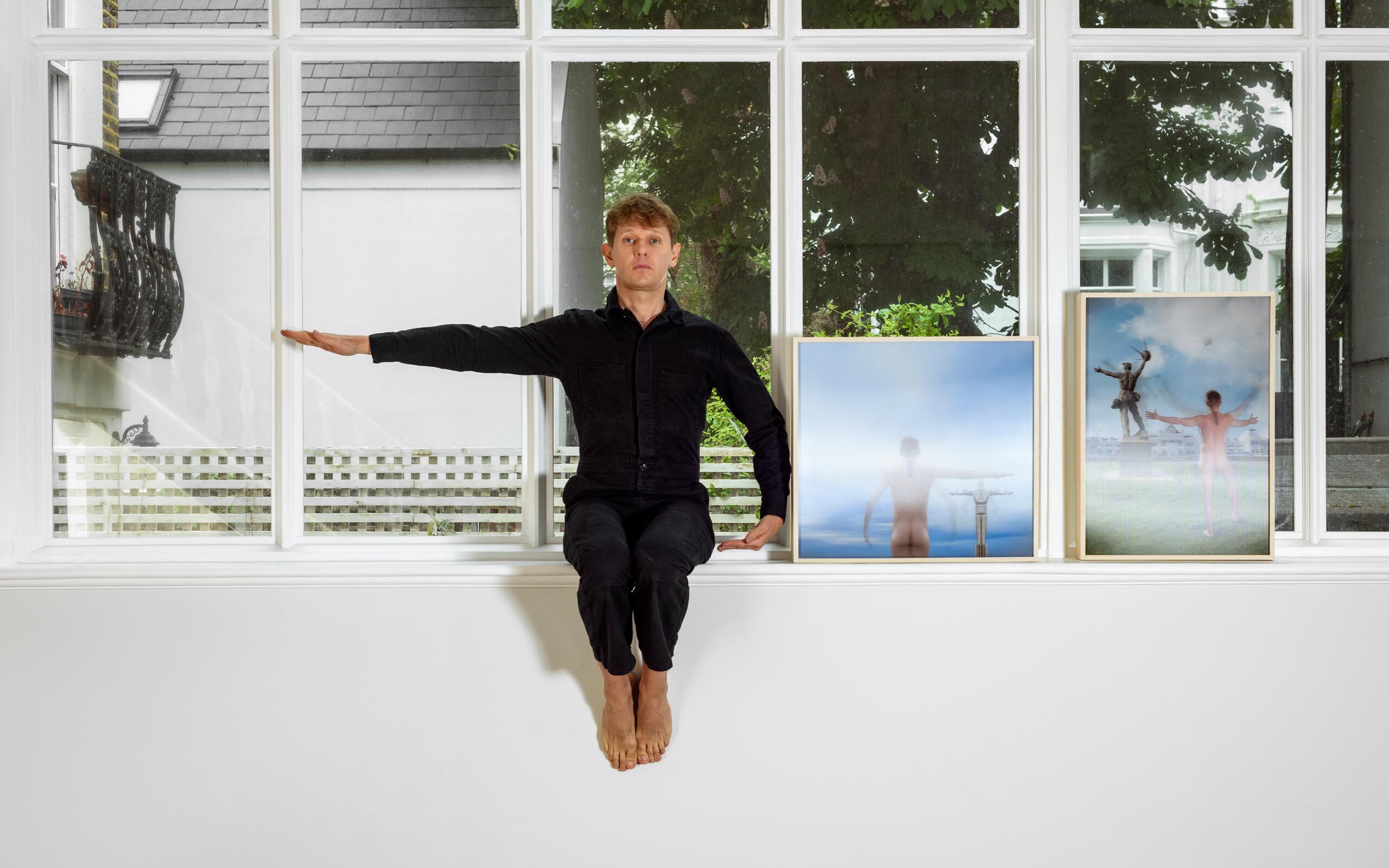
A year ago I saw you in person: you were lying on a wooden pedestal, completely naked. It was a long durational performance you do every even year of your life. Visitors wash their hands and pick one of the 44 cards. They have different tasks: from a simple “Kiss me” to “Do something nice to me.” I had to find the coldest spot on your body and whisper the name of this body part to your ear. The audience reacted in so many ways. Two visitors who needed to slap you on your face or cover your nose and mouth to block your breathing left in tears. What kind of reaction do you expect from the audience?
It’s not like I programmed those reactions, because everything I do is extremely intuitive. My basic rule is to measure the distance that separates the work of art (which in my case is sometimes a human body — my own, to be more specific) from the audience. I think there’s a simple reason why this interaction with the audience is so crucial to me: this is the only way I can explain, in one shot, why we as humans need art in life and how this world is actually interconnected. It’s always a mixture of cruelty and tenderness. Think about a three year old child rocking their baby doll to sleep, who then plucks out the doll’s eyes: this is what the human soul is all about. In the past, people came to watch public executions on city squares, starving for a melange of circus and tragedy. They wanted to know how suffering and death physically look, just like watching porn, or looking at documentation of wars: it’s not just pure curiosity, but also a profound exploration of self. Having said that, I only trust two types of art: tragedy and circus. Of course, the body installed in front of you (as part of the audience) has many different meanings, from the religious to the sexual. This is where I find my reasoning for making art. The world, as I understand it, is organized this way.
So your analysis of the performance happens later. What, then, is going on in your head during the performance?
This is a tricky one, as I can never properly plan on how to organize my time while performing. Three hours is not so long: you need an hour or two to adjust, to start hearing the body, to get used to the pain (if any) or to position your body in the space (always). However, five, or seven, or nine hours with no interval is already something to be reckoned with. In some of my works, I experience various types of pain — it’s demanding. There are people who like to play with pain, but that’s not my natural state. This is where I need all of your stamina and endurance. Sometimes, I perform lighter things where it’s just about waiting until it’s over. I often practice certain mantras and almost invisible physical exercises: I roll my eyeballs, do breathing exercises and meditate through the chakras. My thinking is always intense, so stopping the inner monologue is a big deal for me. However, when it comes to long durational work, there is no other way — you have to corral your running thoughts, or else you will cheat.
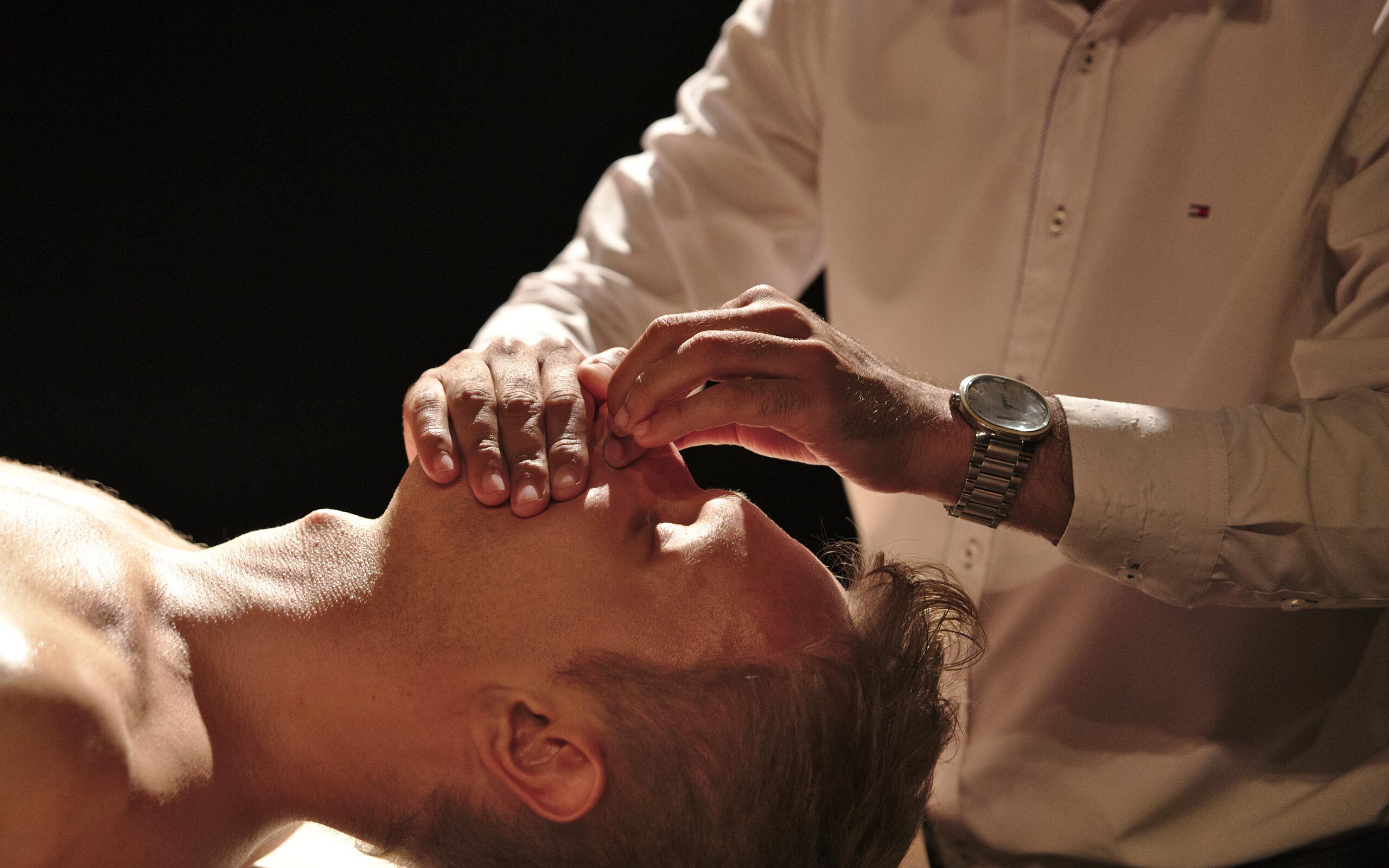
42 cards, Photo: Filipe Conde
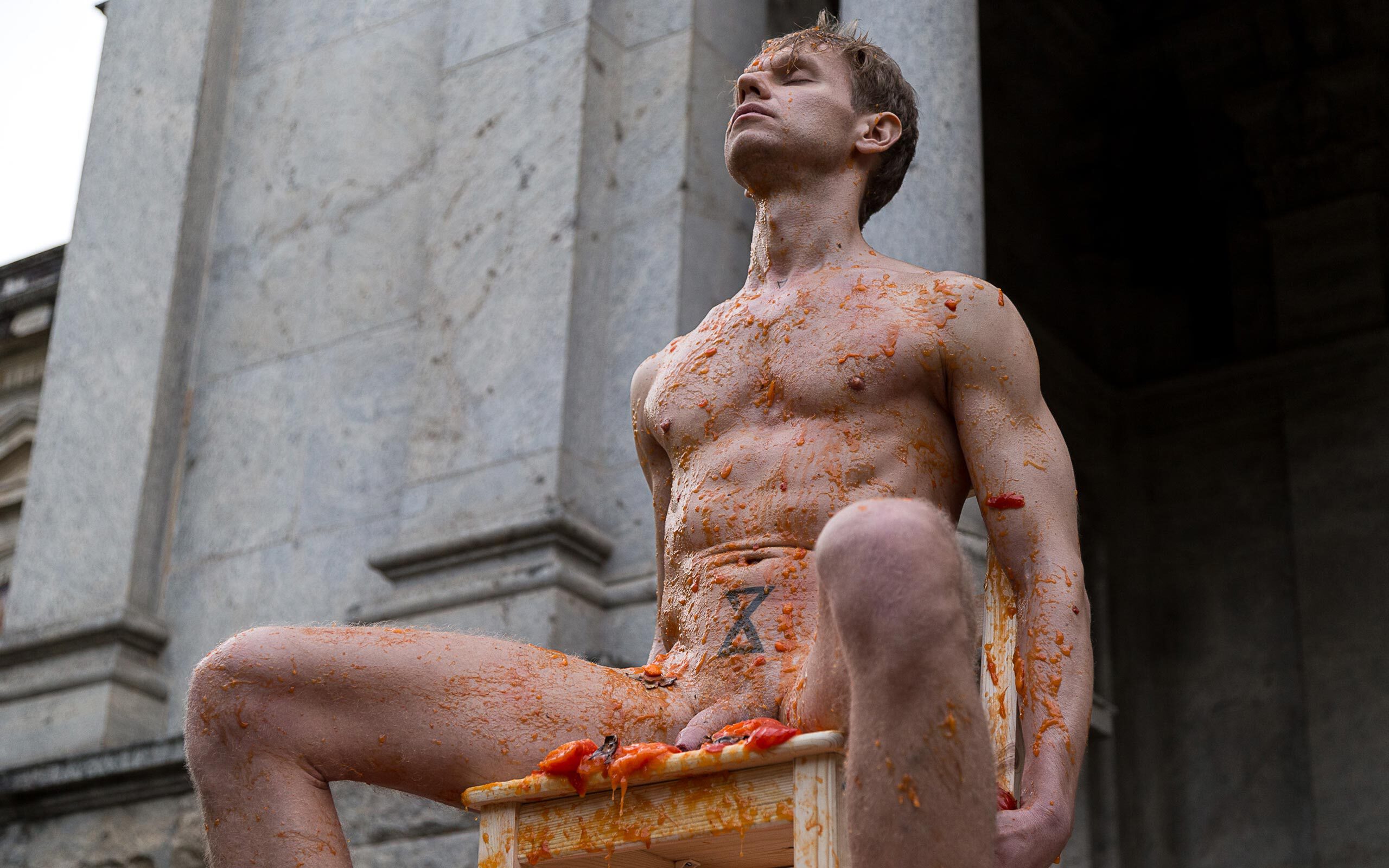
Os Caquis / The Persimmons, 2015, Photo: Pedro Agilson
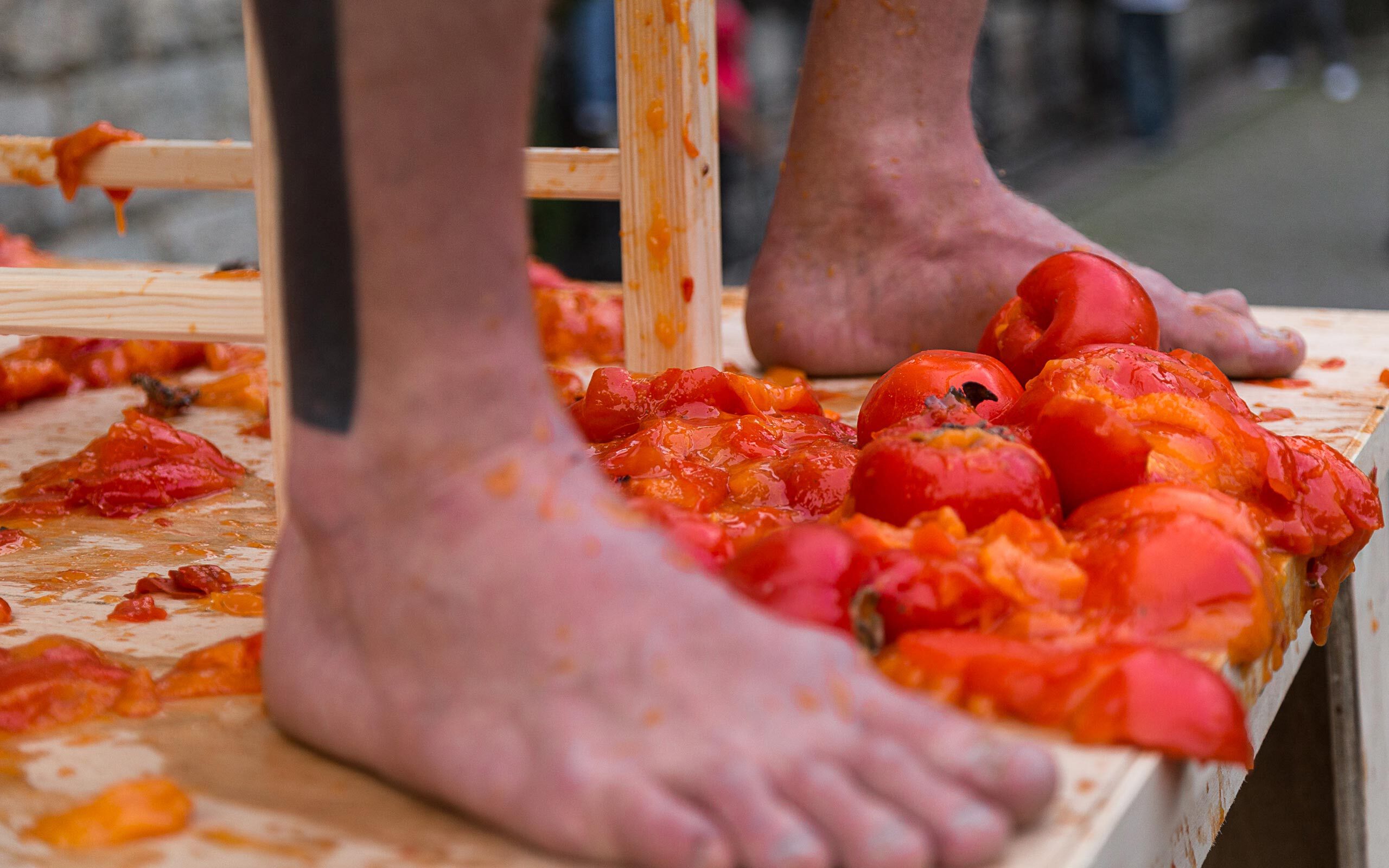
Os Caquis / The Persimmons, 2015, Photo: Pedro Agilson
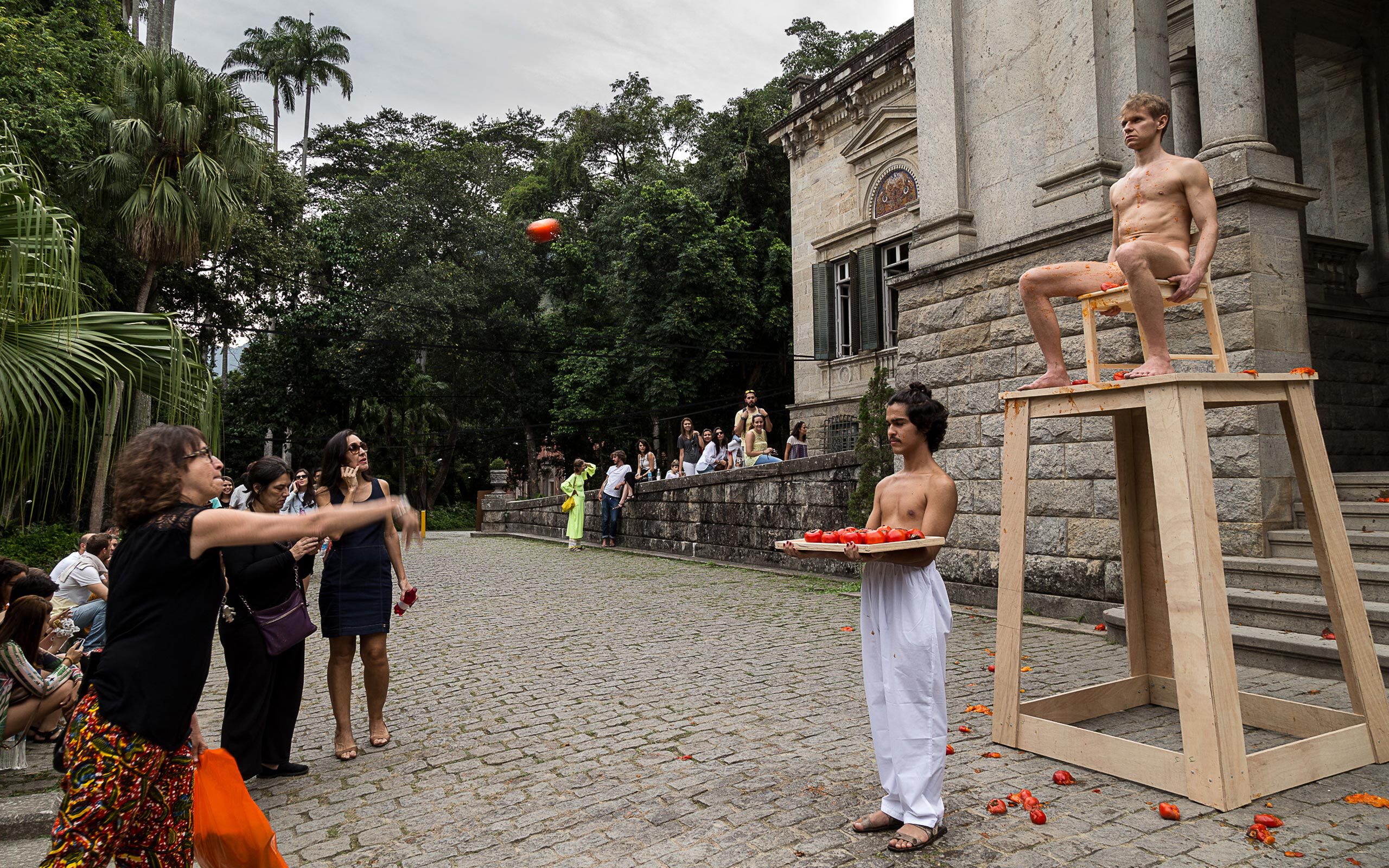
Os Caquis / The Persimmons, 2015, Photo: Pedro Agilson
You have had a performance where you even shared your thoughts with the visitors.
It was in 2009 at Paradise Row in London. My thought was that I would sit on the floor naked and just translate my thoughts into spoken word. Whatever I thought, I had to speak it out loud. This was quite traumatic in a sense, because you often have some dirty, ridiculous, or nonsensical things in your mind, which you then have to pronounce and be honest with yourself. If I cheated or stopped saying things, I would have to take a hammer and break one of the 555 mirrors located along the walls of the room and then walk on the broken glass. It was a very early piece, and I’m not so proud of it now. I’m into minimalism these days, and in 2009, in my second year in performance art (never having studied anything and basically walking with my eyes wide shut), I still had to say a million things at a time. It looks strange to me now, but performance art is about being honest with yourself, so I have to acknowledge how far I’ve come from there — even though it was the same person back then, in 2009.
One of your most known performances is The Foundling. You are in a glass box, naked at the doors of top tier events like Christie’s Vanity Fair dinner and the Met Gala. You were arrested at the latter. What was the fallout: was it appreciated or despised?
When my body was delivered in Venice at [art collector] François Pinault’s Palazzo Cini dinner, many of my museum director and curator friends said: “So funny! Congrats, well done!” But later, when they would invite me to some of their own openings or dinners, they would ask me, “please do not come in a glass box.” In other words, they wouldn’t be happy to transform from an audience to the recipient of the work. Then they’ll sometimes get in touch, saying something like, “We’re throwing a cool party — maybe you could come in a glass box?” Not really. The Foundling only goes where nobody expects it. This box is a message to the people: “Hey there, looks like you don’t quite see the importance of live art. You think it’s non-collectible, you think it’s ephemeral and hard to deal with? No; in fact, it’s easy. It’s here for you. I’m donating my work to you. Now please deal with it.” When it comes to confronting this donation, many curators and managers might feel uncomfortable. The worst part is the DIY nature of this work: I’m locked in there with 18 screws, and I can’t help in that situation, while the recipients suddenly become responsible for their reactions to it. This responsibility is the last thing they dreamt of managing at their event. That’s the reality: there are artists who might get others into trouble and are not much fun to deal with. The glass box is one of these cases. It appears at the most chic and glamorous events in the art world and makes the hosts upset and anxious. My goal is to be rejected, to be sent away, to be a reason for them to call the police. That’s exactly what happened at the Met Gala in NYC, where I was arrested and put into jail. Central Booking Manhattan.
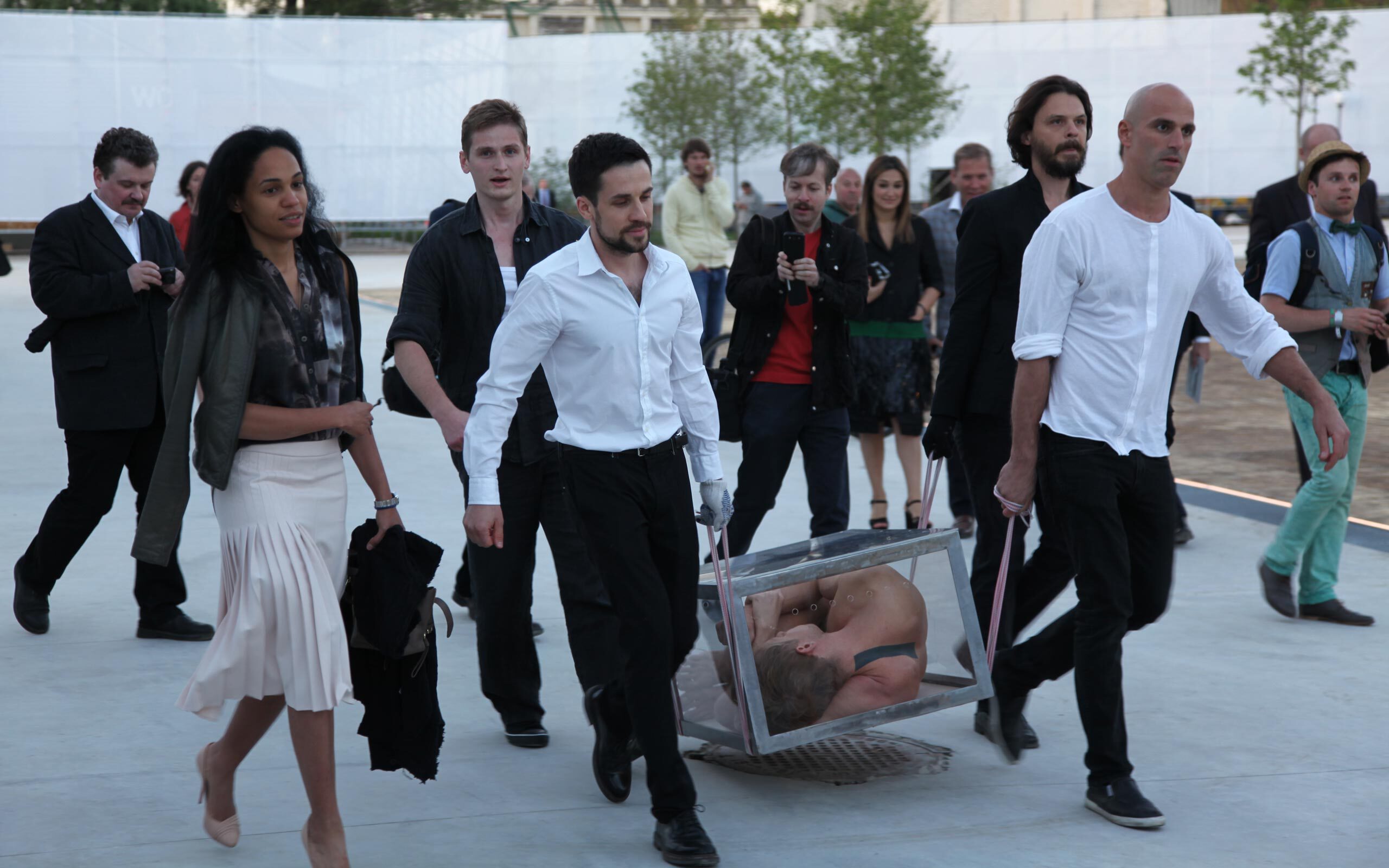
Foundling 2, 2015, Photo: Anna Shpilko
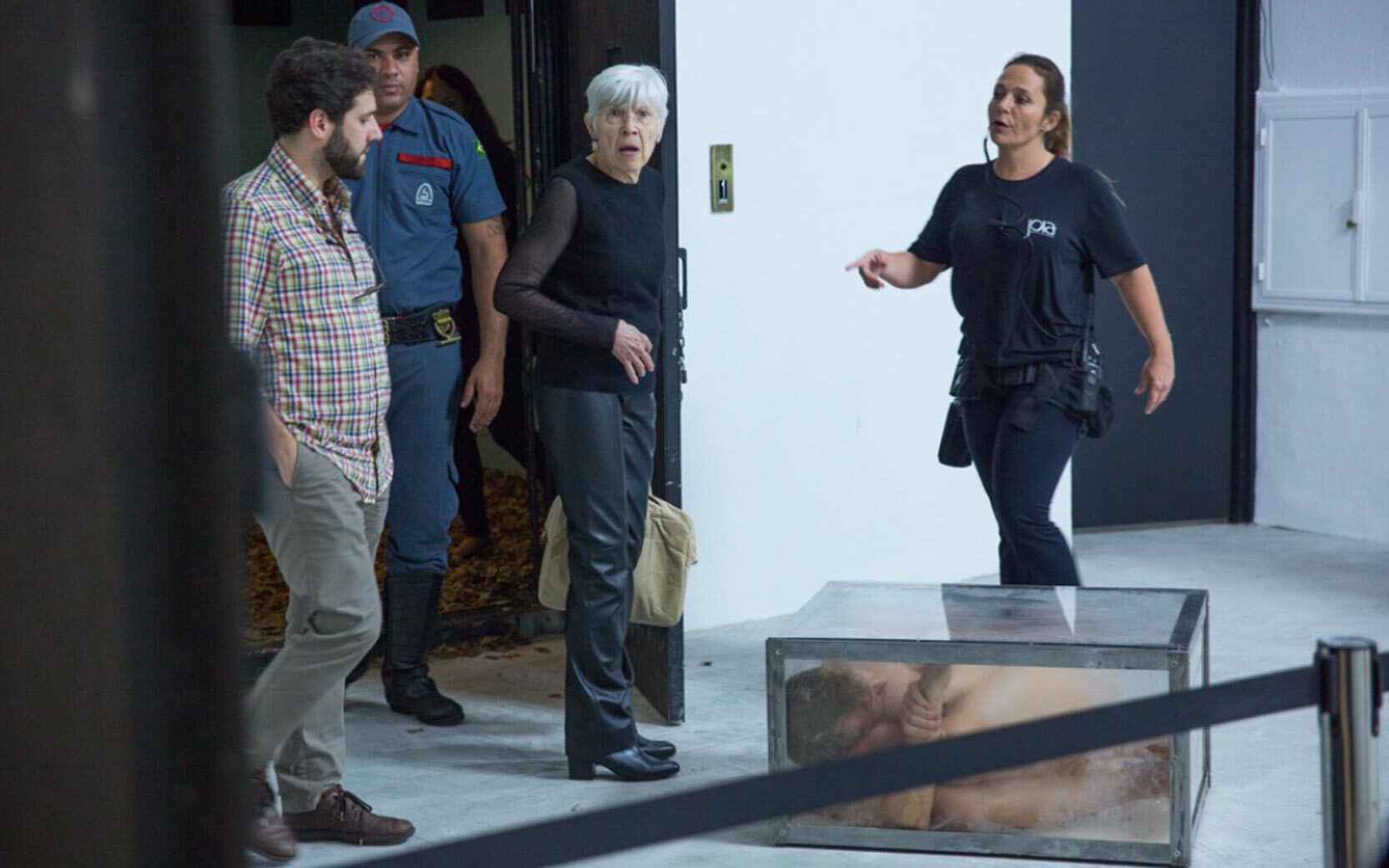
Foundling 4, 2016, Photo: Marcelo Elidio
You mentioned Marina Abramović, the icon of performance art. You know each other and moreover, you have worked together. What is the most important thing she taught you?
My relationship with Marina is something that I truly cherish. We’re close, but we’re so very different. She is extremely generous and purely gorgeous. From the very beginning, she would always support me. She is the one who told me not to be afraid of failures. She would say, “Baby Fedorović” — that’s how she calls her close ones — “it’s so important to fail.” Because of this, I know that even if what I do doesn’t take me anywhere, I have to appreciate those failures as much as any of my eventual successes.
In 2021, Humble Works was a joint exhibition with Marina Abramović and Nico Vascellari in London. You brought with you a horrific amount of dust. What’s the story behind that?
Dust is a beautiful material. It’s so dangerously weightless, but also physical and under-explored. Also, I’m badly allergic to dust, but in spite of that, I’ve always been so mesmerized by the dust that is generated underneath my bed. My friends know I’m very flirtatious in life, and as a performance artist, you have to be sincere about your human nature, your body and how you deal with other people. This makes me very open minded in romantic relationships, sex and anything else that comes around this way. At a certain point, I began thinking, “How am I gonna remember the relationships or the encounters?” That’s when I decided to source the dust from underneath the beds of every single sexual partner in my life whom I could remember. I went through my contacts, since I’ve always marked every contact with some sexual meaning behind them in a special way. I discovered that some of them were dead by the time I started this research, while some of them had been lost forever. Others didn’t want to talk to me. Still, I managed to get a hold of 300 people or so. Eventually, 280 of them donated their dust to me.
Did something else happen when you visited these people?
I made some drawings of the beds of the people that were important to me. The most powerful part was when I did a drawing of my husband’s bed. Since he’s Russian, and has kids, it’s best that they don’t know we’re a couple. If they mentioned this at school, they would get into trouble, and maybe even taken away by the state. So I have never seen his bed in real life. I asked him to send me a picture of it and then drew it, hoping that one day we’ll have a bed in our family home, safe and sorted with all of our children.
What’s going to happen with the dust sculpture?
The idea is that when I die, this gigantic dust egg will be cremated along with my body. Whoever owns The Large Grey Sculpture (that’s the title of the work) would have to sign a contract stating that the work must be returned to the person responsible for my estate in order to be cremated. Later, the owner will receive a small capsule filled with a mixture of dust from the sculpture and my own ashes, which will then be installed at the bottom of a heavy framed life-size photograph of the no-longer-existing sculpture. Performance art is a time-based medium, and this work is all about time.
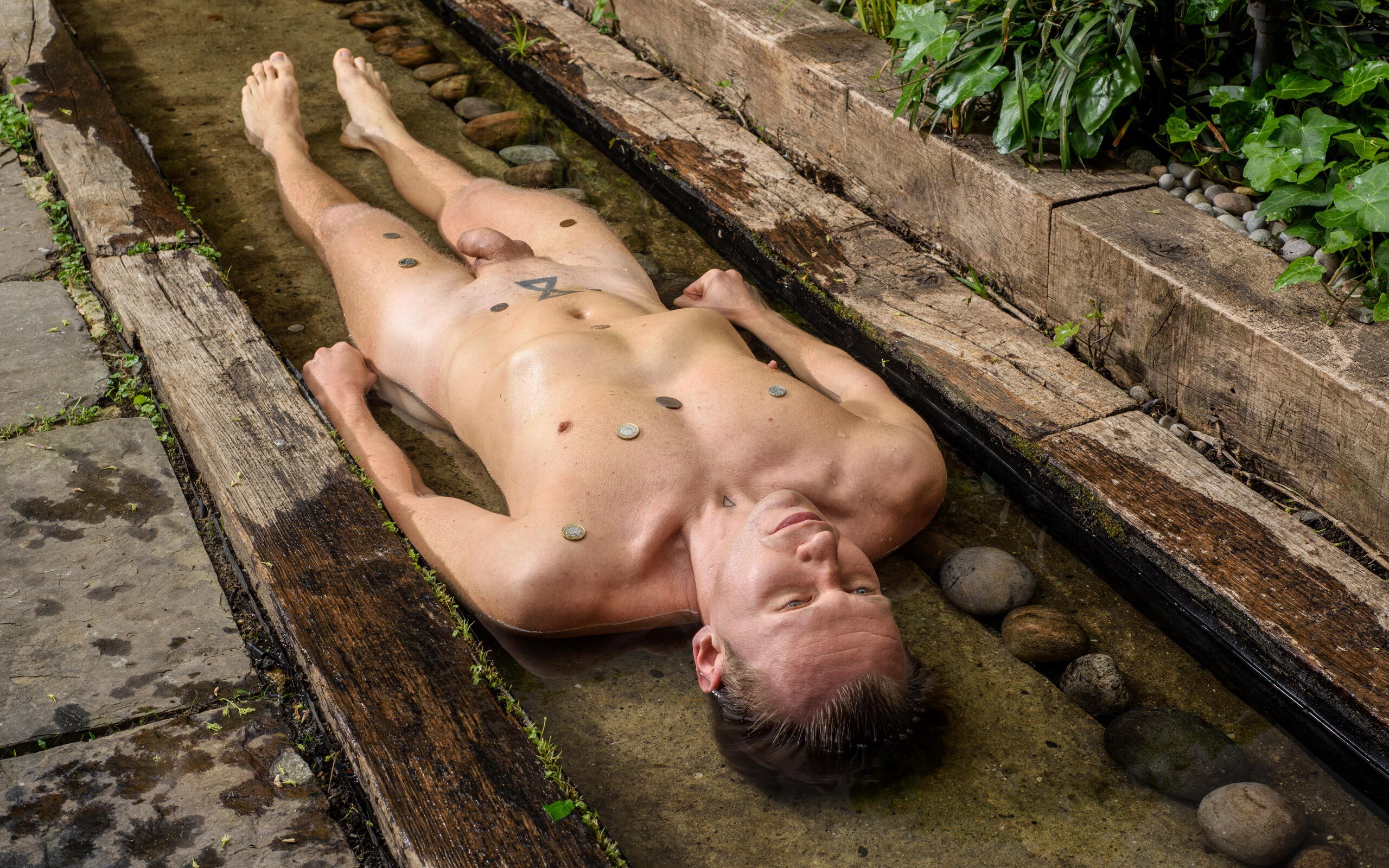
The Bright Stream (After Shostakovich), 2022, Photo: Thierry Bal
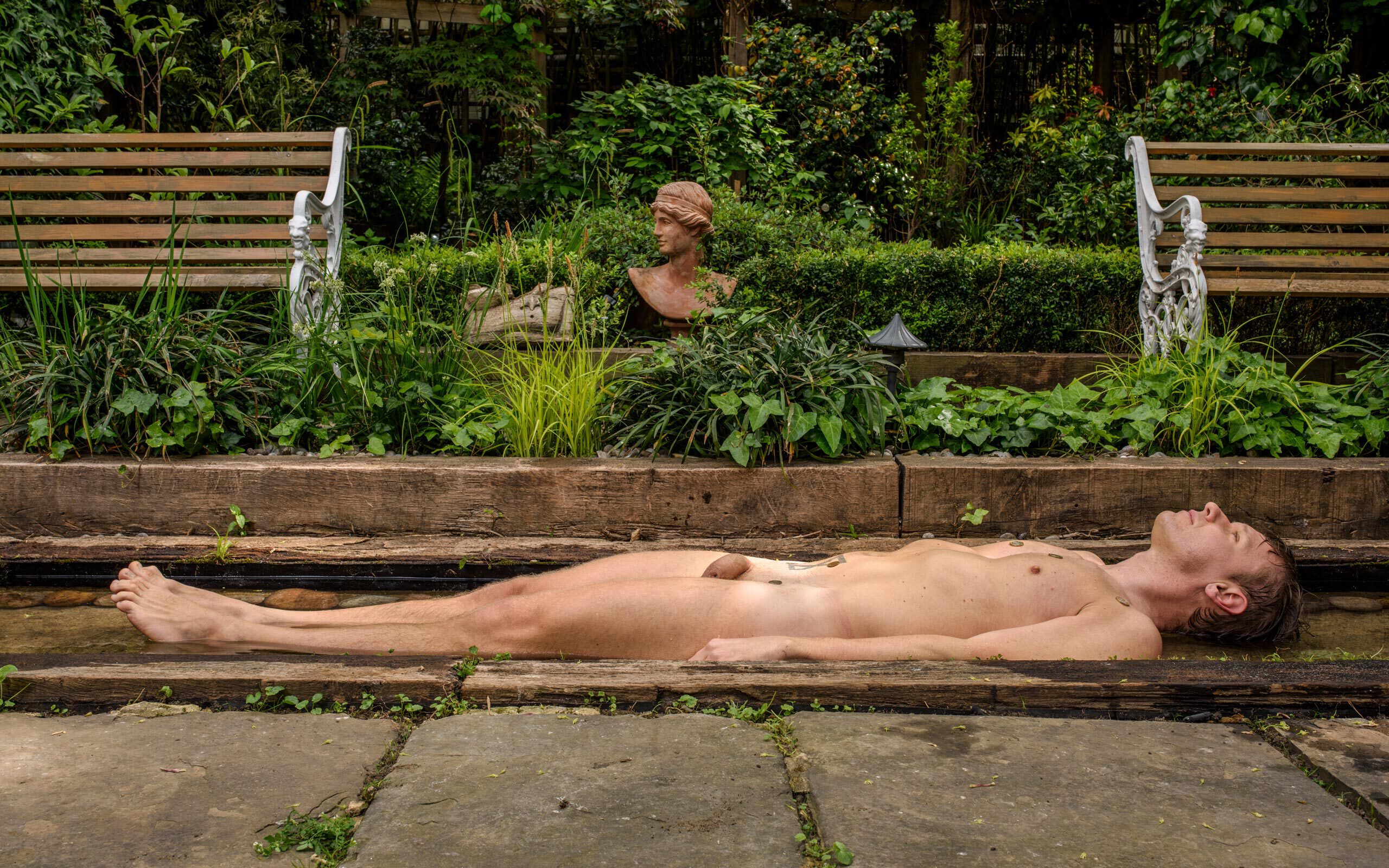
The Bright Stream (After Shostakovich), 2022, Photo: Thierry Bal
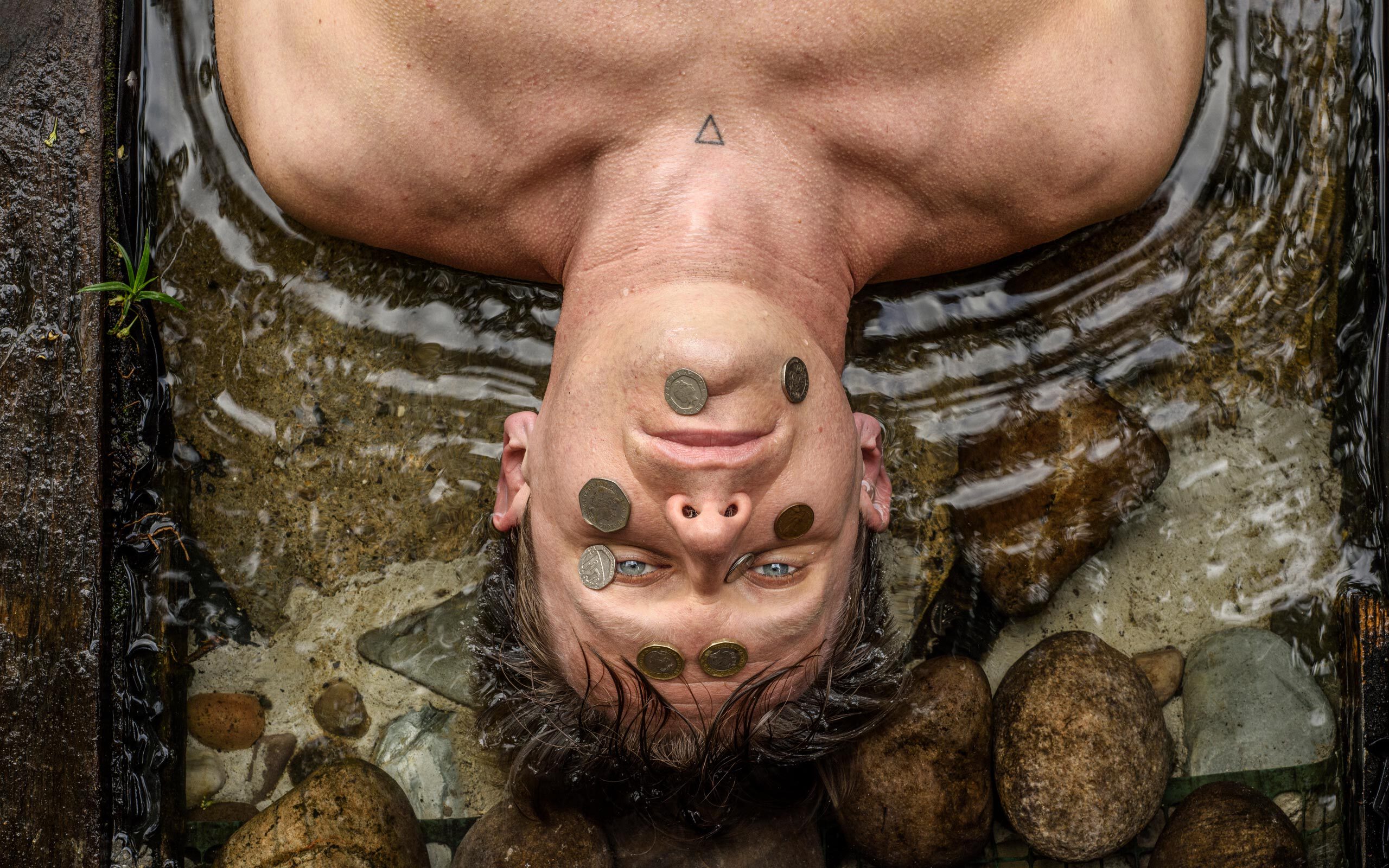
The Bright Stream (After Shostakovich), 2022, Photo: Thierry Bal
This year you were supposed to have a major solo show in Moscow. How do you see the prospects for your art in Russia?
I had a clear vision that I shouldn’t do anything in Russia until the moment I turn 15 years old as an artist. As I started working in performance art at age 31, this year would be that 15-year mark, and it was just the right time for a mid-career museum retrospective that, first of all, would assemble some of the works I’ve made so far, and secondly, would tell people in Russia, amongst whom I spent most of my life, what I really do. The exhibition was supposed to be called “Hi Mrs. Thatcher, I’m a Dispatcher,” and the opening was scheduled for May 24 at MMOMA in Moscow. Unfortunately, I had to cancel it for obvious reasons, and moreover, I’m not planning to work in Russia until the political situation dramatically changes. Right after the war in Ukraine started, I wrote a letter to the museum, saying I’d have to cancel the exhibition we’ve been working on for over the last two years with a brilliant international team of curators. These years of work and all the radical ideas we had about how to build this show will now be sealed and put away until a better time; it will probably happen sometime, somewhere else, but all of that is so unimportant in light of what Russia is doing to Ukraine. It’s been months of terrible depression and tears, fury and powerlessness. I have the deepest sympathy for all my colleagues in the arts in Russia who are essentially captive, and who cannot leave. There tens of thousands of them, and many of them have lost their jobs after making public antiwar statements. My friends and I run two small private charity initiatives: one in support of those cultural workers in Russia who have lost everything and now face up to 15 years in jail, and another one about which I have to be discreet, due to the sensitive matter of it.
Does art give you a platform for political messages?
I have never considered myself a political artist, an activist or a protester. I’ve always felt like there are less literal ways for me to talk about the ideas that burn inside my head as an artist. Lately, though, this has become impossible. Many Russians tend to say, “We stay away from politics” — and that’s how we ended up where we are now. I feel a personal responsibility for how Russia is messing the world up right now. That was my fault, someone who was too lazy to go to protests in Moscow in 2010, thinking to myself, “Other people should do politics — I talk through my work.” That was the last moment before it was too late. It was my fault, as I continued serving as a state employee after the whole Crimea situation started: I ran Solyanka State Gallery in Moscow for 9 years, as Russia’s only institution entirely focused on live art, then left in 2019 when the police shut down a show that I curated due to its political message. So I realized I had to speak up. I did my first political work in 2017: I hung, wrapped in a Muslim burial carpet, off the facade of a building on Dover Street in London (Gazelli Art House), trying to make people think of the severe repression of LGBTQ+ people in Chechnya. I still believe I’m not equipped to deliver direct political messages as brilliantly as many of my fellow activist artists, who do so in so many amazing ways. I used to act differently, talking about things in a kind of poetic way. But poetry shuts up when war starts, or turns into something wounded and extremely fragile. Whatever you do in Russia, you get arrested straight away, even before you open your mouth. I don’t think my role is to sit in jail these days. I could create much more meaning by working. (The Russian police tracks down performance artists: they seem to consider us a dangerous tribe.)
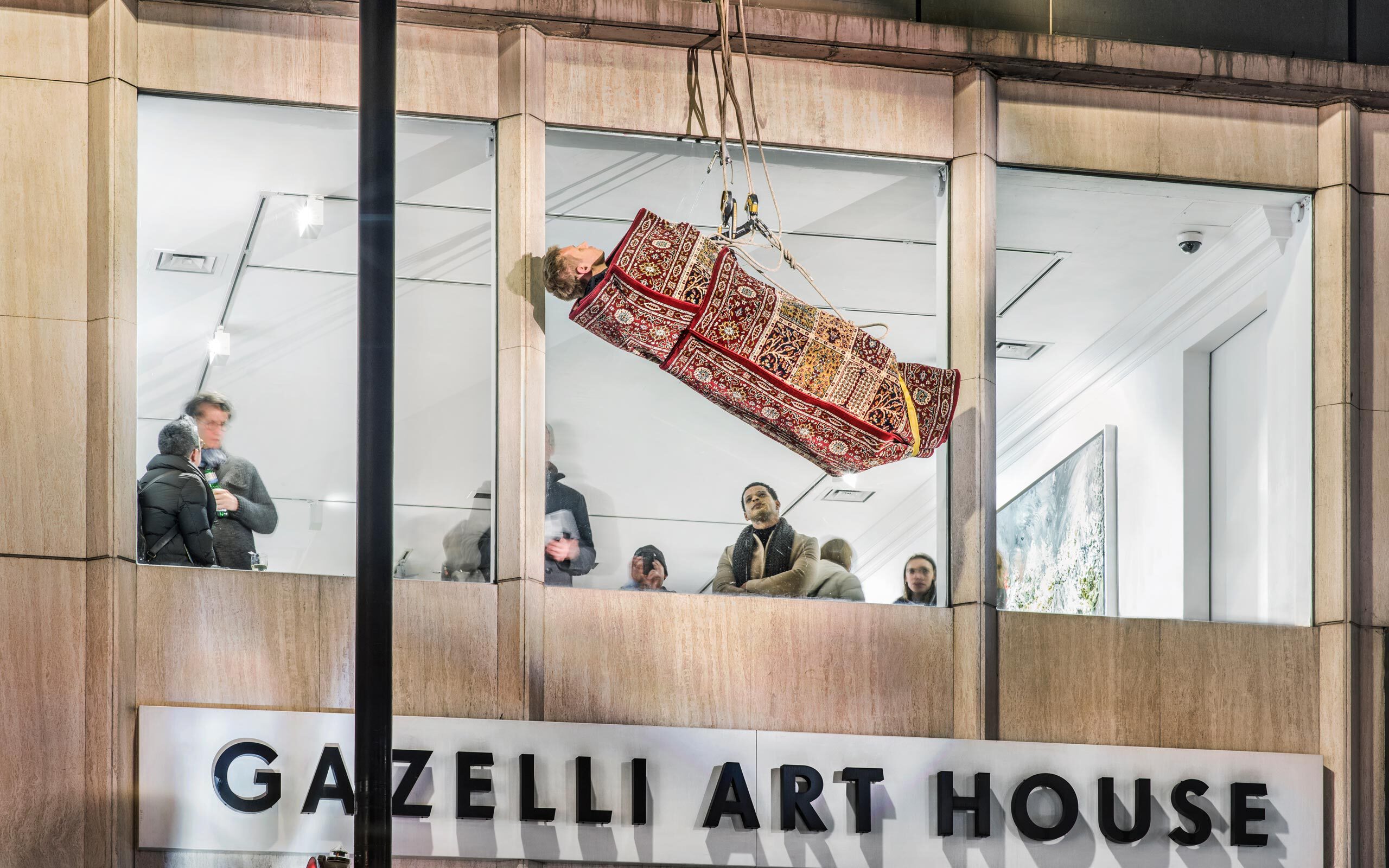
Temporary Monument 0 (2018), Gazelli Art House, London, Photo: Thierry Bal

My Flag is Red, 2022, Photo: Stefano Cornaccia
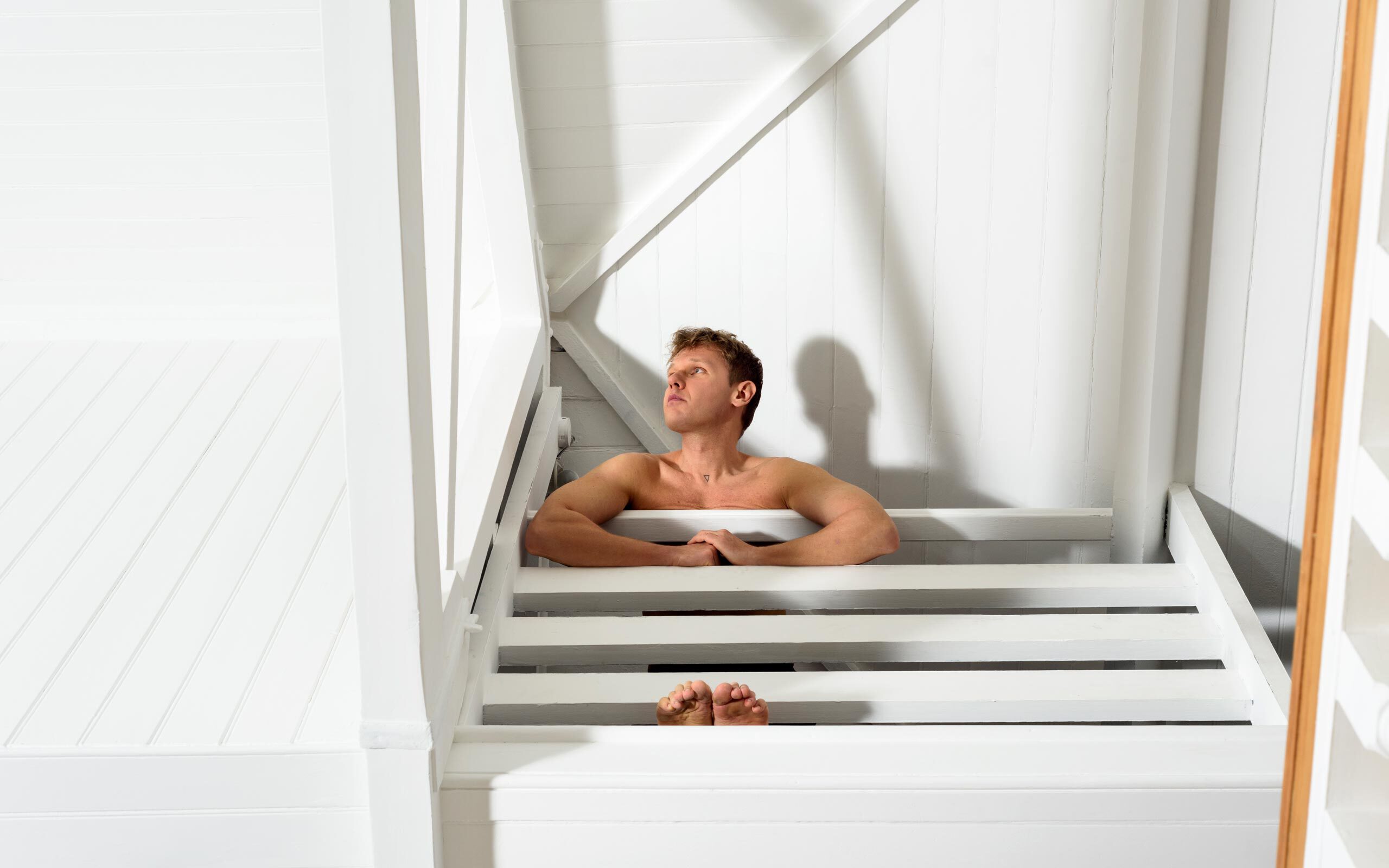
Where can we see you in the future?
Together with my wonderful partner in crime, São Paulo-based architect Olga Treivas, I am building Antifurniture, a series of sculptures lost somewhere between an amusement park and a torture garden. These sculptures turn a museum visitor’s body into a body of war. It is the perfect embodiment of circus plus tragedy. Hopefully it will have its premiere in Brazil in September, touring several institutions around the country. I’m also working on my summer show for Baró Galeria in Palma de Mallorca, scheduled to open in late July. I’ll perform a new piece there, as well as show a new series of lenticular pieces, documenting some of my recent live works purely in black-and-white. There’s no space for bright colors these days, I suppose.
You’ve been making performance art for almost 15 years. What’s the most important thing you’ve learned about yourself and about the world?
I don’t yet believe that I’m 100% truthful to myself. My work helps me to measure my current level of honesty and transparency, in a way. For example, I’ve always been scared of getting old or being physically restricted. But now I realize that that I’m 46, and to be honest, I feel better than ever before. I know that my work needs my body the way it is, with all of its beautiful and ugly angles, at every single moment of my life and work. At the end of the day, it’s quite important for me to look at my own organism as a tool. To see how it changes with time, and how it reflects those changes. How this main medium of mine brings my mind to a deeper and deeper level of involvement. That is quite a beautiful thing to sense.
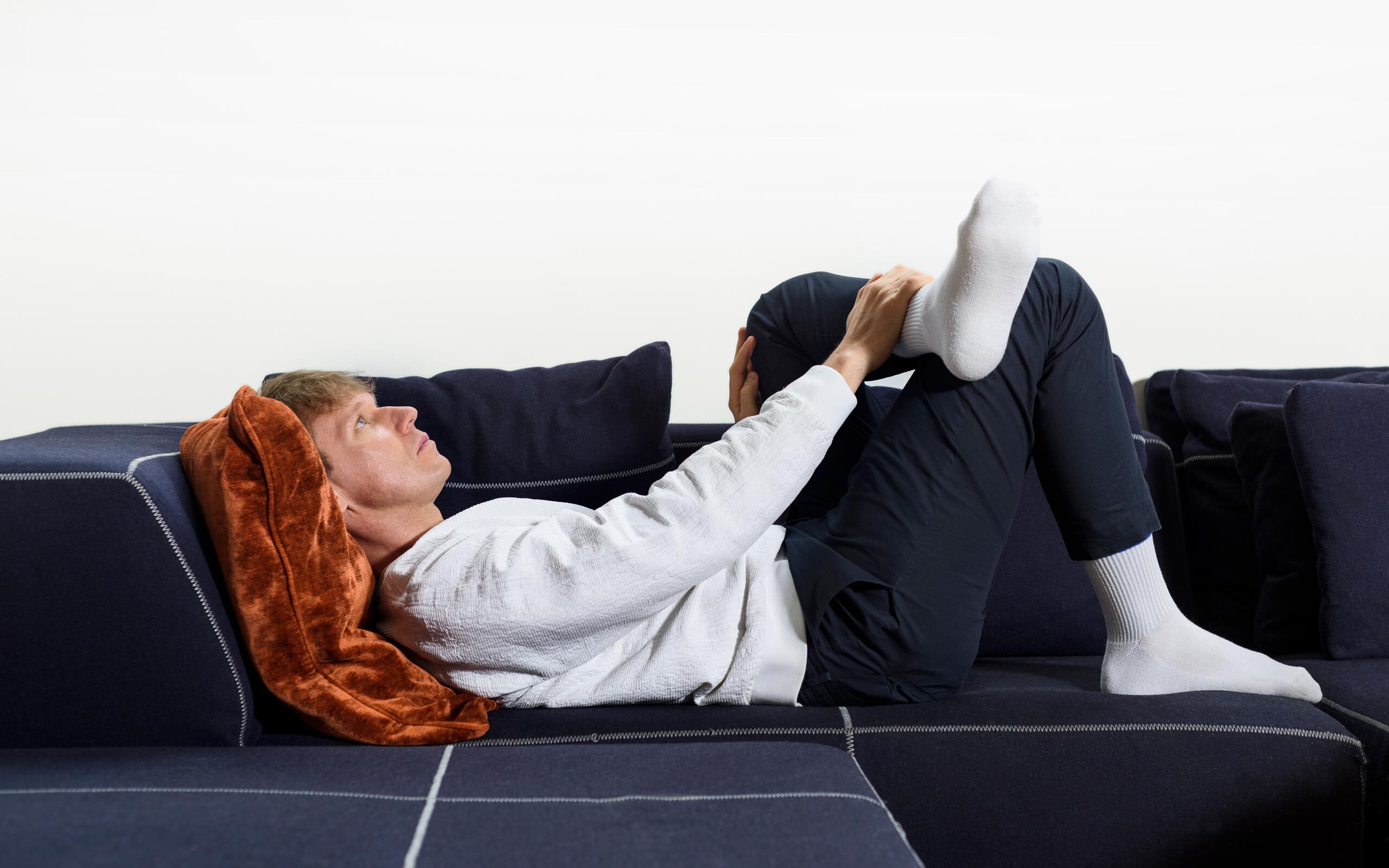
Interview: Anton Isiukov
Photos: Thierry Bal


